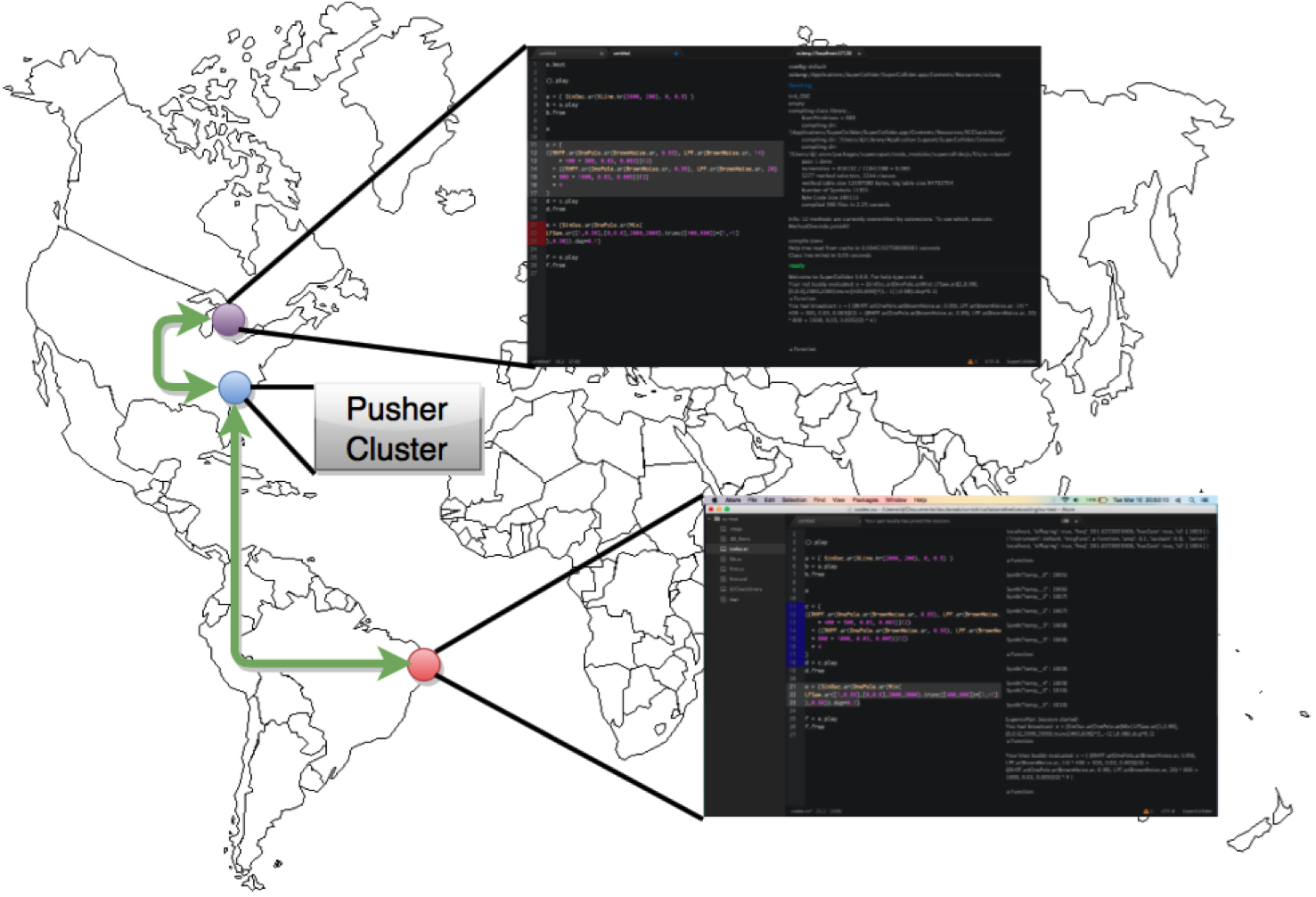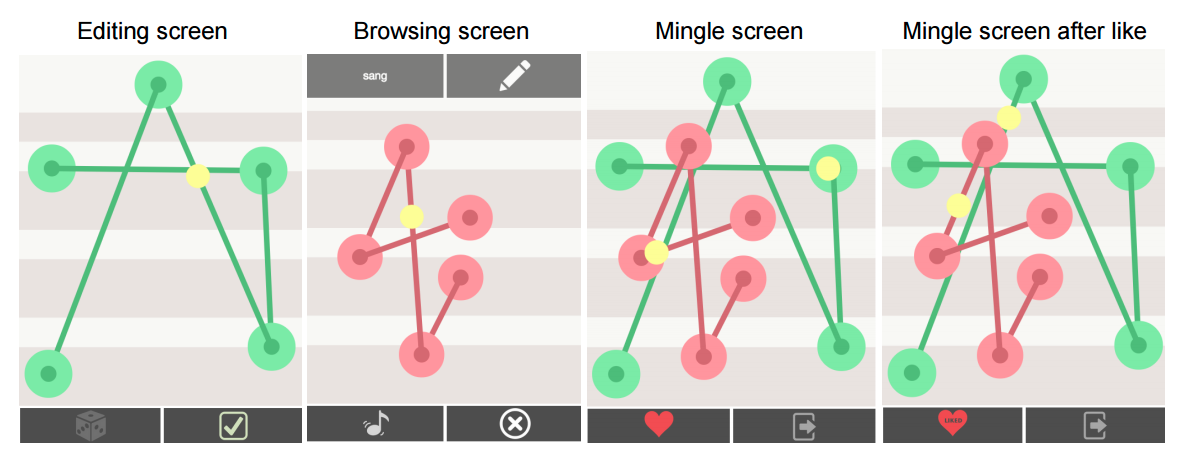Live Writing Demo is available at http://www.echobin.com
Live Writing is the concept of asynchronous playback of a live coding performance or, more generally, writing. The concept of Live Writing is realized in a web-based application which logs every keystroke that a writer makes and let the writing later playable by the audience or the readers in real-time. The goal of Live Writing is twofold. One, it aims to support collaboration between musicians by reproducing a live coding performance based on keystroke data logged in the platform. This offers a new way for a live coder to archive live coding music and to communicate with others in asynchronous fashion. Two, it aims to transform written communication into a real-time experience so that a writer can display a writing to readers in a real-time manner as if it is being typed in front of the readers. We explain the design and the implementation of the system and demonstrate two different use cases of the system: live coding and writing.
Live coding music is a type of written communication between human and machine expressed in programming language. At the same time, the algorithmic representation of music is a window into a composer’s thoughts. Therefore, in the case of collaborative live coding, code sharing is an important part of communication, understanding each other’s thoughts, and exchanging ideas. Most of the times, the collaboration in this live coding practice occurs in real time, due to its live nature and asynchronous communication being limited. However, being able to archive and replay live performances can further expand and enable important aspects of live coding performance culture. Benefits include the ability to (1) collaborate asynchronously, (2) incorporate last live performances into reinterpretation, reappropriation, and the creation of a persistent performance corpus.
The Live Writing platform logs all keystrokes made by a live coder with timestamp information in order to reproduce the musician’s play later. The system can be used to archive any live coding performance ranging from individual practice to actual performances in public. The term “asynchronous” collaboration in “live” coding sounds contradictory. However, it seems potentially exciting to envision a live coding system such as one that will facilitate asynchronous collaboration. In other words, how do we utilize technologies to help a musician communicate with other musicians without needing to be present at the same time? As an extreme example, how could a live coder reproduce a piece that has been written by a live coder who has since passed away. Naturally, this poses two questions: how to notate a live coding piece and how to archive a live coder’s playing.
Our second goal with Live Writing is to transform, as the name suggests, general written communication into a real time experience. Writing is rich form of communication and we live in an age when we produce large volumes of writing through digital platforms such as the World Wide Web, and mobile devices. The Live Writing platform lets writers (not necessarily just live coders and artists but anyone) present their writing to readers in the same way that it was typed at the time of creation. The real-time rendering of writing gives much more expressive power to the writer and gives readers the intimacy of peeking at someone’s computer screen in private. The core idea of Live Writing is to reveal the incomplete stages of writing and of the textual dynamic as part of the written expression.
Papers
- Live Writing: Asynchronous Playback of Live Coding and Writing.
Sang Won Lee, Georg Essl. (paper).
In Proceedings of the International Conference on Live Coding (ICLC) 2015, Leeds, United Kingdom


